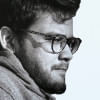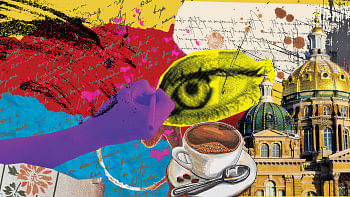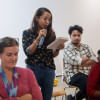Why academic writing deserves to be beautiful

In the polished corridors of academia, knowledge often arrives dressed in sterile syntax and armored in technical jargon. Academic writing, as it is widely practiced, has become a genre of exclusion: dried out with data, burdened by mechanistic objectivity, and devoid of the human pulse. Far too often, instead of speaking to the people, it speaks to a protocol; it serves not understanding, but authority.
This self-imposed austerity of such writing is a political problem. It narrows the scope of who can access knowledge and who feels invited to participate in its making. The dry, arcane language of academia often builds walls rather than bridges. The irony is that knowledge, in its truest form, should be the most democratic of human inheritances. Yet it is increasingly delivered in codes decipherable only by a closed circle of credentialed insiders.
The result is a dialectic of estrangement: academic writing versus literary writing; the technocrat versus the poet; the expert versus the layperson. It is a dialectic marred by dogma and prejudice—especially the delusional pride of those who believe they are the sole custodians of "real" knowledge. The tragedy is that in this obsessive pursuit of objectivity, many academics render their own findings unintelligible to the very audiences who might benefit from them.
One might argue that in fields such as engineering or neuroscience, technical rigor is indispensable. Of course, clarity of method and precision of language are necessary. But even here, as Oliver Sacks—both a neurologist and a literary master—has shown us, the story is not the enemy of science. As Sacks wrote in The Man Who Mistook His Wife for a Hat (Summit Books, 1985), "There is an inextricable narrative dimension to the practice of medicine." Even in the most technical fields, storytelling can illuminate truths that charts and equations alone cannot.
Martha Nussbaum, the philosopher and classicist, has long argued for the ethical and imaginative capacities of literary expression. In her book Not for Profit: Why Democracy Needs the Humanities (Princeton University Press, 2010), she warns of a world where education becomes a training ground for economic functionaries rather than thoughtful citizens. Academic prose, she implies, must reclaim its soul, must speak not only to minds, but to hearts.
This becomes even more urgent in disciplines like architecture, literature, sociology, and philosophy—fields inherently tied to human experience. When architectural theorists write only for other theorists, they betray the very people who dwell in the buildings they discuss. When the language of the humanities becomes indecipherable, it fails its calling: to humanise, to interpret, to heal.
By literary quality, I do not mean indulgent fictionality or rhetorical ornamentation. I mean language that is alive—language that possesses a poetic simplicity, a cadence, a rhythm that echoes the way thought feels when it first arrives in the mind. As Helen Gardner once wrote in defense of literary criticism: "A good critic makes a bridge between the poem and the reader. A bad critic sets up a barrier." The same can be said of good academic writing.
The refusal to write beautifully is often justified in the name of neutrality, of detachment, of discipline. But this is a myth. Every sentence already carries an ideology. George Orwell famously warned that "the slovenliness of our language makes it easier for us to have foolish thoughts" in his essay "Politics and the English Language" (1946). Conversely, clarity and elegance of expression sharpen the mind and make knowledge more ethically accountable.
bell hooks, in her seminal work Teaching to Transgress (Routledge, 1994), reminds us that "The academy is not paradise. But learning is a place where paradise can be created." That paradise is impossible without language that liberates rather than confines, that invites rather than intimidates.
In architecture, where I work, the divide between academic writing and creative expression has grown dangerously wide. Our classrooms overflow with diagrams and data, yet few speak of beauty, mystery, or metaphysical experience. The great task of architectural thinking is not merely to calculate dimensions but to capture dimensions of being. For that, we need language that dares to dream.
Italo Calvino, in his Six Memos for the Next Millennium (Harvard University Press, 1988), reminds us of literature's most enduring value: lightness. Not superficiality, but a refusal to be crushed under the weight of one's own abstraction. This is the gift that the literary imagination can offer to academic work: a sense of grace, of movement, of inner vision made visible.
Academic knowledge, if it is to matter at all, must return to its poetic roots. It must aspire not only to be accurate but also to be felt, remembered, shared. It must be a public good, not a private code. Only then can we claim to serve the true mission of knowledge: not to discriminate, but to disseminate.
Maruf Ahmed is an architect, thinker, and lecturer of architecture at Khulna University of Engineering & Technology, Bangladesh.

 For all latest news, follow The Daily Star's Google News channel.
For all latest news, follow The Daily Star's Google News channel. 










Comments